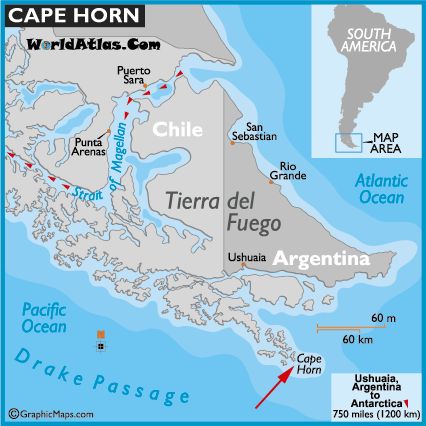Argentina rejected a decree from the Chilean government on Saturday considering that it “intends to appropriate a part of the Argentine continental shelf and a large area of the seabed and ocean floor,” according to the Foreign Ministry in a statement. The Chilean decree was published last Thursday, dated August 23, in the Official Gazette of that country.
The decree by Chilean President Sebastián Piñera set the limits of its sovereign territory in the Cape Horn area, at the southernmost tip of the American continent. The cape is located on Isla Hornos in the Hermite Islands group, at the southern end of the Tierra del Fuego archipelago. It is the north edge of the Drake Passage, the strait between South America and Antarctica.
The measure published in the Official Gazette – the Chilean Official Gazette – exposes an overlap in the territorial delimitation of the sovereignty of both countries, which formalizes a new territorial dispute with the trans-Andean nation.

“The measure attempted by Chile seeks to appropriate a part of the Argentine continental shelf and an extensive area of the seabed and ocean, a maritime space that is part of the Common Heritage of Humanity in accordance with the United Nations Convention on the Law of the Sea”, says the Argentinian Foreign Ministry’s letter.
“Consequently, the aforementioned Chilean claim is not acceptable to the Argentine Republic and raises a situation that will have to be resolved through dialogue in defense of Argentine rights; in accordance with the historic brotherhood of our peoples and international law”, said the note released this Saturday.
Since 2020, the Sebastián Piñera government has been questioning the Argentinian sovereign claims on the extended continental shelf and a law sanctioned by Argentina. The decree establishes the Chilean platform from 200 nautical miles from the Diego Ramírez Islands, south of Cape Horn, based on the new official measure. But, this delimitation includes maritime areas that had already been officialized as Argentina’s own by the United Nations (UN) since 2009.
“This measure aims to project the continental shelf east of meridian 67º 16′ 0, which clearly does not agree with the Treaty of Peace and Friendship concluded between both countries in 1984”, wrote Felipe Solá, Minister of Foreign Affairs and Worship under President Alberto Fernández.
According to the terms of the Argentine State, the outer limit of the Argentine continental shelf in this area is reflected in National Law 27,557, sanctioned on August 4, 2020, unanimously.
“Said law only collects in an internal norm the timely presentation made by the Argentine Government on said area before the Commission on the Limits of the Continental Shelf (CLPC). This presentation is fully consistent with the Treaty of Peace and Friendship and was approved without question by said Commission. with the effects of establishing a definitive and mandatory maritime boundary in accordance with the United Nations Convention on the Law of the Sea (UNCLOS). Neither the presentation nor the Commission’s decision was contested by Chile”, says the text of the Ministry of Foreign Relations.
The Commission on the Limits of the Continental Shelf is a body created by the United Nations Convention on the Law of the Sea (UNCLOS). It is made up of 21 members elected based on equitable geographical representation. It is responsible for reviewing the data submitted by the states to determine the outer limits of the bordering platform.
The continental shelf is the natural extension of a national territory that includes the underwater areas’ bed and subsoil extending beyond the territorial sea. Up to 200 miles from the platform, it encompasses what is considered an “Exclusive Economic Zone”: the marine area that a country has in its right to exploit living or mineral natural resources for its benefits, such as fishing, oil or others.
It is not the first conflict of this nature between the administrations of Alberto Fernández and Sebastián Piñera. At the beginning of August, an error in a Fernández decree with military directives provoked a strong claim from Chile, where the so-called “National Defense Policy Directive” was established.
Expressly, these regulations indicated that the Strait of Magellan and the Mar de Hoces were considered “shared spaces in which it is essential to continue strengthening joint study, exploration, and control.” This forced the Chilean government to send a formal communication reminding that “the Strait of Magellan, including its two banks, is sovereign Chilean territory.” In that dispute, the Argentine government recognized that it was its own mistake and would be amended.
In the case of the dispute over the continental shelf limits, the current official conflict was foreseeable. Sebastián Piñera had already anticipated that he would present the claim to the UN to incorporate miles of sovereignty over the maritime platform of the Austral Sea to refute the proposal that the Argentine government made in 2009.
On 23rd 2020, Chile sent a diplomatic note to the UN Secretary-General, Antonio Guterres, where they explained that the country “does not recognize the demarcation of the route in the Southern Sea area because it is a unilateral declaration (not opposable) by Argentina, so Chile reserves the right to determine its position in that sector”. In this context, the Chilean government acknowledged that it had not undertaken the corresponding delimitation task that Argentina did.
